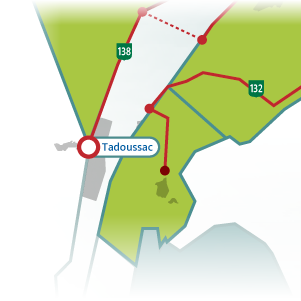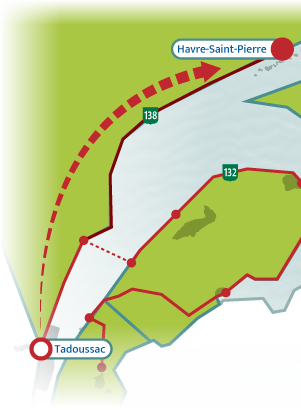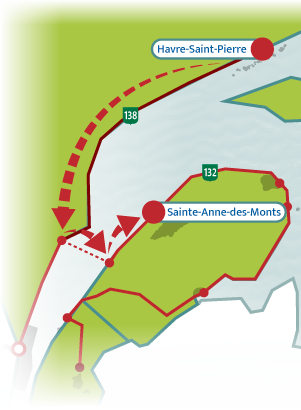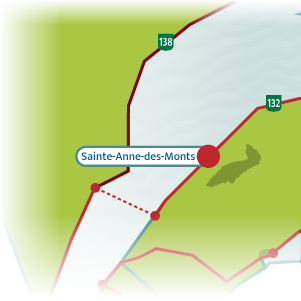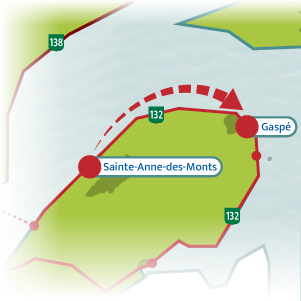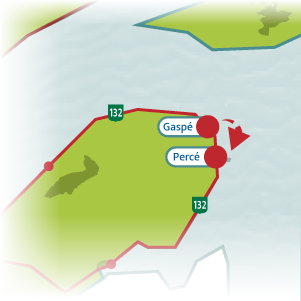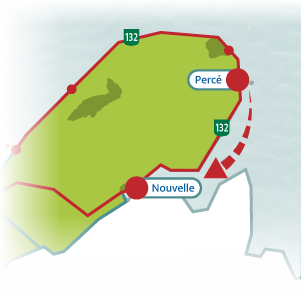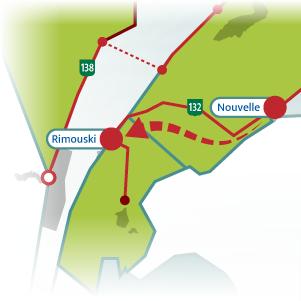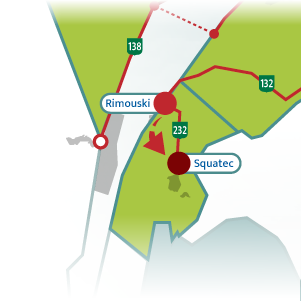
Tadoussac
1-2Parc national du Fjord-du-Saguenay
Parc national du Fjord-du-Saguenay has been marked by the retreating glaciers and offers vast and unique landscapes to explore on foot or by mountain bike. Sea kayaking is also an ideal way to discover the stunning beauty of the fjord. Bordered by rich flora, this waterway is home to a variety of bird species, including the peregrine falcon, the park’s animal emblem. Naturalist guides will introduce you to the secrets of this park through theatrical performances and talks. You can prolong your experience by camping in the park or renting a cabin.
Saguenay–St. Lawrence Marine Park
Covering an area of 1245 km2 (480 sq. mi.), the Saguenay–St. Lawrence Marine Park is the only park in Québec composed entirely of water. Participate in a sea excursion to encounter the many marine mammals found in this park, including the only beluga pod south of the Arctic and subarctic regions, humpbacks, and blue whales, the largest animals to have ever lived on earth. You can also observe whales from several locations along the shore. A number of sites along the park boundary make up the Saguenay–St. Lawrence Discovery Network, including the Marine Environment Discovery Centre and the Cap-de-Bon-Désir Interpretation and Observation Centre.
